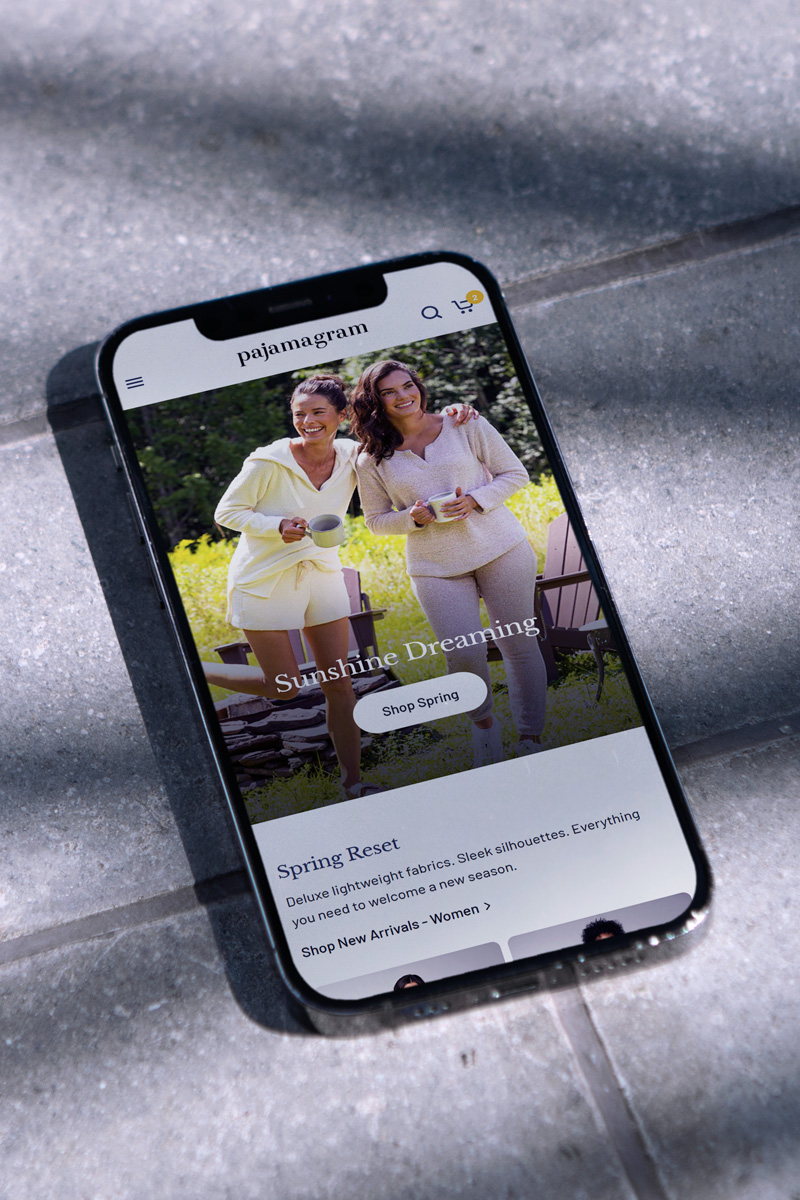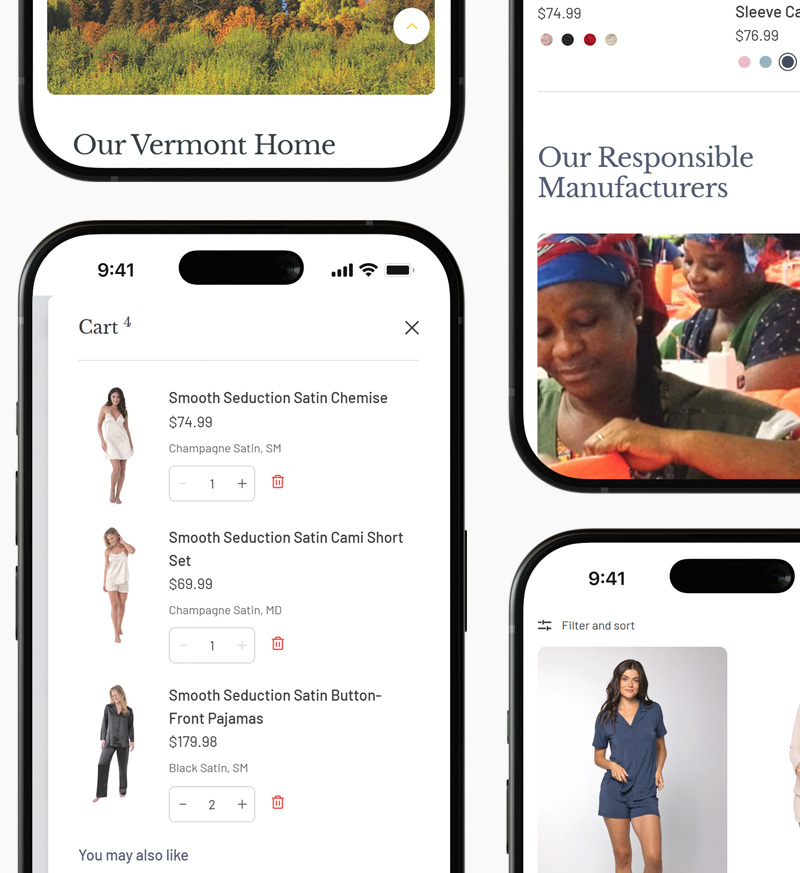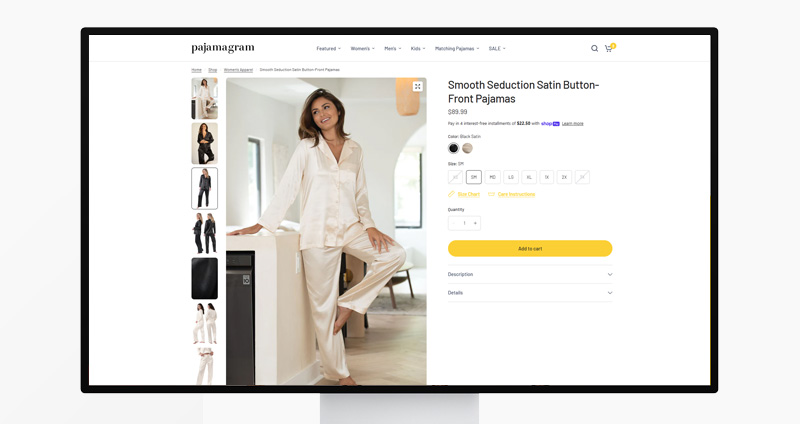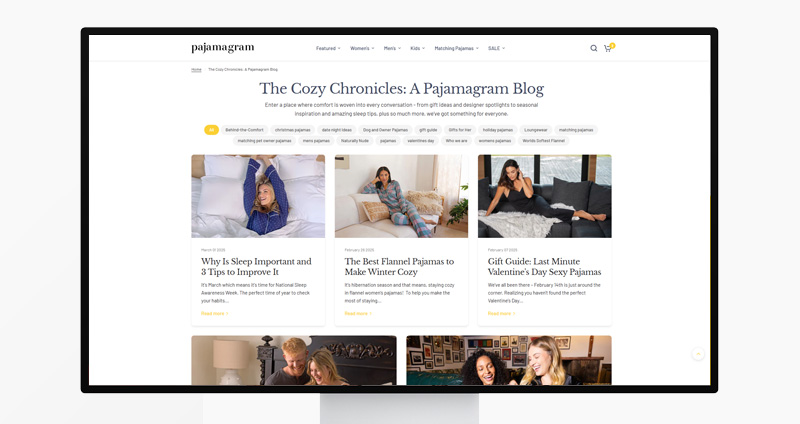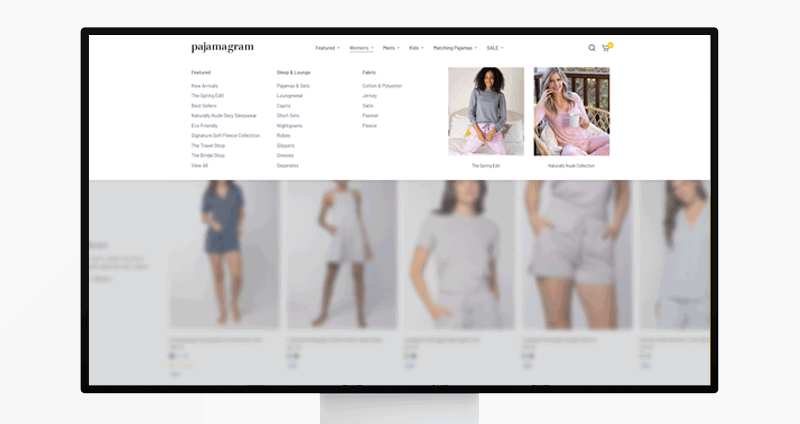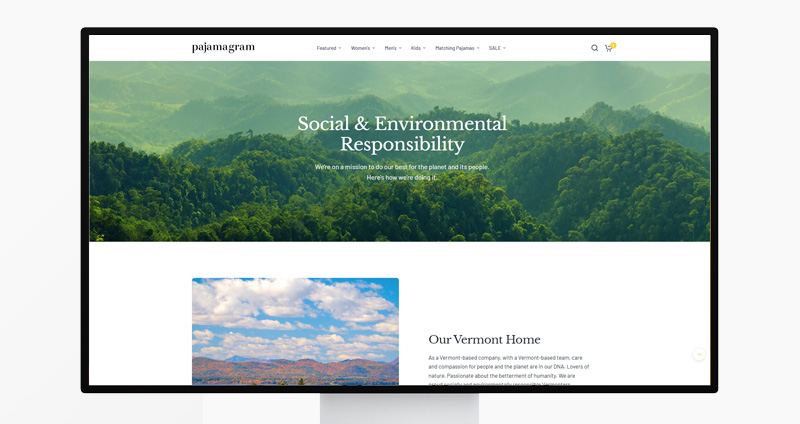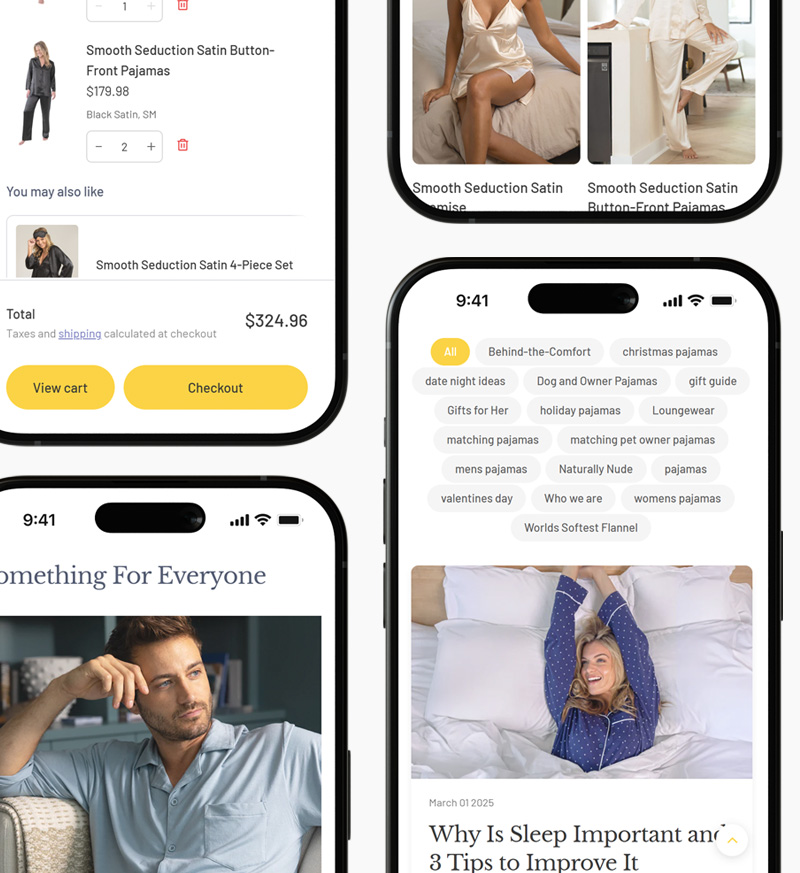Pajamagram 2024
Commerce Cloud Migration to Shopify
How the Right Shopify Theme Selection Transformed Functionality, Focus, and Flexibility
- Job Title
- Senior UX/Web Designer
- Research
- Prototyping
- User journey mapping
- Competitive analysis
- A/B testing
- Design & Production
- Low fidelity wireframes
- High fidelity prototypes
- UI & UX Design
- Dev documentation
